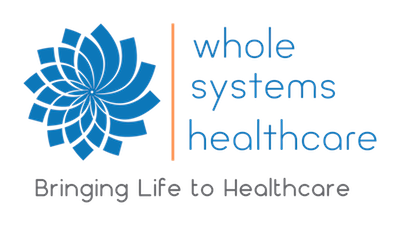This is the sixth article in an ongoing series on inflammation. Part 1 is a brief introduction to inflammation; part 2 is a first look at acute inflammation from a biomedical perspective; and part 3 is an exploration of acute inflammation from a Chinese Medicine perspective, examining the concept of Defensive Qi; part 4 is a brief look at the biomedical elements of chronic inflammation; part 5 was an examination of chronic inflammation from a Chinese Medicine perspective; this article will examine treatments for inflammation, building on the various causes outlined in previous articles.
The information presented here is for informational and educational purposes only, and should not be taken as medical advice. It is impossible to fully address such a complex topic as treatment of inflammation in such a brief article. For serious physical injuries and chronic inflammatory conditions it is always advisable to seek proper medical help before attempting to treat yourself.
Treating Acute Inflammation
The important thing to remember about acute inflammation is that it is the beginning of the healing response. Inflammation is necessary in order to heal from whatever injury has been done to the body. The goal of treatment is to increase the speed of this response, in order to more quickly return to optimum health and function.
Physical Injuries
For physical injuries, the common acronym R.I.C.E. – referring to Rest, Ice, Compression, Elevation – which has been the standard in sports medicine for decades, is generally not a good idea. Although this protocol will reduce pain and swelling, it also slows down the inflammatory response, and thus delays healing; it can also create the conditions for chronic inflammation. The creator of this protocol, Gabe Mirkin, has now changed his recommendation, advocating against ice and complete rest.
The best approach to treating acute inflammation from a physical injury is to help the body do its job. This typically means increasing the flow of blood and fluids both to and from the area of injury. A few basic rules apply:
- Heat draws circulation to the area, whereas cold constricts vessels and reduces swelling. Use alternating hot and cold to create a pumping action. This pulls necessary nutrients and healing factors to the area, and takes away dead cells and metabolic waste products.
- Avoid ice locally. This intense cold is too constricting and shuts down metabolic functions, thus slowing healing.
- Don’t move in a way that causes pain. Pain is a message from the body that there is something wrong; it’s typically best to listen to this message.
- Avoid anti-inflammatory medications unless absolutely necessary to control pain. Medications such as Ibuprofen stop the initiation of inflammation and slow down the healing response.
- If the skin has been broken use antimicrobial substances topically to minimize the chance of localized infection.
- Support your system with fresh, whole foods. Avoid highly processed food and junk food.
It’s also a good idea to contact a healthcare provider who can give you more individualized instructions to speed up healing.
Inflammation from Infection
Infection can create both localized inflammation (like when an injury becomes infected) as well as systemic inflammation (such as fever). With a localized infection, in addition to the above rules, use a topical antimicrobial, which can be an antibiotic like Neosporin, an herbal ointment or poultice, or other substances such as colloidal silver. Common antiseptic agents such as hydrogen peroxide and rubbing alcohol should only be used to clean a wound, and should not be used to try and stop infection or inflammation during the healing process. Herbs can do more than simply inhibit or kill bacteria, and if you have access to good wound-care herbs they will typically work as well or better than antibiotic cream.
Acute inflammation that becomes systemic almost always manifests as a fever. See Fever? Good! for a detailed discussion on working with fevers at home.
Treating Chronic Inflammation
In chronic inflammation the situation is more complex. The inflammation doesn’t resolve, either because the cause is consistently aggravating us, or the factors that help resolution are deficient. There are often multiple causes, and figuring out what to address first is often a good reason to see a medical professional. However, depending on the individual, the following steps are usually necessary:
- Replace processed foods in your diet with whole, nutrient-dense foods.
- Avoid dietary toxins and chemicals as much as possible, including artificial colors, artificial sweeteners, foods containing trans-fats, and produce with high concentrations of chemicals.
- Ask your doctor about any medications you are taking that could be contributing to inflammation.
- Find out what nutrients are being depleted by medications you are taking. You may need to supplement with these nutrients, as many vitamins and minerals are involved in the inflammatory process (often helping to resolve it).
- Manage and reduce stress. Work and interpersonal stress can be a huge factor in chronic inflammation, as the stressful emotions that are generated create Heat (hyperlink to part 5) in the body.
- Deal with any chronic infections.
- Investigate and work with any trauma, whether at the physical, emotional, or mental level. This is work best done with help.
- Rest. Most of us in our capitalist society have overworked ourselves for most of our adult lives. Rest is necessary for rejuvenation.
The difficulty that comes with enacting the above steps is that most of them have to do with lifestyle and behavior. Lifestyle, consisting of ingrained habits of both thought and behavior, is hard to change, since it usually serves us in the short-term, even if it’s damaging our health and happiness in the long-term. Unfortunately, there is no magic bullet treatment for chronic inflammation, as much as the supplement and superfood companies wish for you to believe it. Health and vitality come from living a life in balance, and treating chronic inflammation requires a return to that balance.



